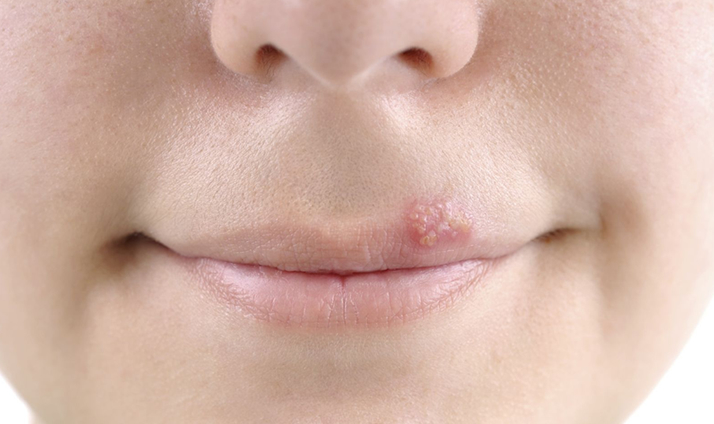The dreaded cold sore – painful, difficult to hide and most definitely embarrassing, even more so when they become infected, because we just can’t stop picking! This month we look at what causes cold sores and how you can assist customers who may be suffering from a cold sore.
Usually appearing on or next to the lips, in nostrils and on chins, cold sores are fairly common. Cold sores generally aren’t serious for most people, but they can be painful and usually go away on their own within two to four weeks.
What is a cold sore?
Cold sores are caused by the herpes simplex virus (HSV) and are contagious, passed on to others through skin-to-skin contact, saliva, or mucus that comes from the nose or mouth.
Generally, HSV-1 causes cold sores and HSV-2 cause’s genital herpes. However, both can cause sores on both the face and genitals if there is skin contact. Once you’ve had a herpes infection, the virus lies inactive in your skin and may return as another cold sore in the same place as before. Recurrence can be triggered by:
- Viral infection/fever
- Hormonal changes
- Stress
- Fatigue
- Sun or wind burn
- Dry lips
- Weather changes
- Immune system changes
Cold sore symptoms
There are four stages
1. Tingle
Most people may feel a tingle, burning feeling or itch around their lips or nose. This is usually a warning sign that a cold sore is about to appear. This stage may last for a couple of hours or up to two days before it appears.
2. Blister
A red, painful lump appears which turns into small, painful, fluid-filled blisters. The blister may last few days.
3. Weeping
The blisters then burst and fluid weeps. At this point, the virus is particularly contagious.
4. Scab
The blister will then dry up and become crusty. The scab will likely clear within a week.
Without treatment, cold sores usually take 7-10 days to heal and don’t usually leave a scar.
During a first-time outbreak, some people may experience more than what you can see on the outside, including:
• Fever
• Painful eroded gums
• Sore throat
• Headaches
• Muscle aches
• Swollen lymph nodes
Assistance you can offer
It’s likely you’ll see customers once the sore has manifested, but some suffer more often than others, so preventative measures are often sought in the pharmacy too. Cold sore treatments may be unscheduled or Pharmacist Only Medicines. You need to understand when to provide your customers with advice and information and when they should be referred to the pharmacist. It’s also important to know there are cold sore preparations for each stage, so understanding the variations can make all the difference.
- Here are some options available in the pharmacy for your customers:
- Anti-viral medications such as Acyclovir come in many forms, including creams and ointments. These shorten the duration of the cold sore by reducing the ability of the virus to reproduce. These work best if started early as possible – usually the first tingle, and are applied as directed.
- Products containing a local anesthetic, such as lignocaine, can help relieve the pain.
Cold sore wound patches to protect and assist healing. - If more than one cold sore is present the customer should be referred to pharmacist as it may be a symptom of a more complicated health problem.
- Those with a weakened immune system (e.g. HIV infection), should be directed to their doctor.
- Remind customers to:
o Not touch the cold sore except when applying a cold sore product.
o Avoid skin-to-skin contact while blisters are present.
o Avoid sharing utensils, towels, makeup etc.
o Keep their hands clean!
References
- Cold sores (oral herpes)
- Assist customers seeking to relieve skin and fungal conditions – SIRCPPK206
- Diseases and conditions: cold sore – Mayo Clinic

